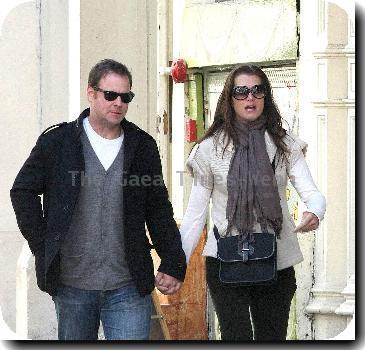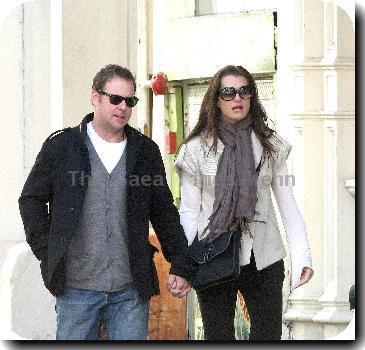Image is everything: Agassi’s book adds plenty of new, unexpected visuals, including drug use
By Howard Fendrich, APWednesday, October 28, 2009
‘I hate tennis’: Agassi’s book adds to his tale
So much of Andre Agassi’s life has been spent in the public eye — the various highs and lows, on and off the court, during his transformation from tennis brat to elder statesman — that it was possible to wonder how much more there was to be said about it all.
Plenty, it turns out. Excerpts of Agassi’s upcoming autobiography published Wednesday by Sports Illustrated and the Times of London contain graphic depictions of his use of crystal meth, an account of how he wriggled his way out of a suspension by lying to the ATP tour after failing a 1997 drug test, and the jarring contention that he always hated tennis “with a dark and secret passion” because of his overbearing father.
If image is indeed everything, as Agassi used to say to sell a sponsor’s cameras, he has provided new, indelible, behind-the-scenes images — along with raising questions about why he chose to reveal his crystal meth habit.
“Is it cathartic? I don’t know. I think it’s strictly from the heart. That’s the way he has operated in my view, going back to the latter portion of his playing career,” said Arlen Kantarian, who ran the U.S. Open from 2000-08. “I’m sure he feels good about getting it out on the table.”
Agassi, who won eight Grand Slam singles titles before retiring in 2006, is not explaining himself at the moment. His representative referred interview requests to his publishing company, which has set up a “60 Minutes” appearance on Nov. 8, the day before the book’s scheduled release.
After an exhibition match Sunday in Macau against longtime rival Pete Sampras, Agassi was asked if the book contains major revelations.
“I think I had to learn a lot about myself through the process,” Agassi said. “There was a lot that even surprised me. So to think that one won’t be surprised by it, it would be an understatement.
“Whatever revelations exist, you’ll get to see in full glory,” he added. “But the truth is, my hope is that somebody doesn’t just learn more about me, what it is I’ve been through, but somehow through those lessons, they can learn a lot about themselves. And I think it’s fair to say that they will.”
SI and the Times of London are among four publications that paid for the rights to print parts of “Open: An Autobiography.” Among the material excerpted:
— Agassi calls his father “violent by nature,” and recalls being in the car when his father pointed a handgun at another driver.
— He writes about making money by hustling people on tennis courts and remembers when, at 9 years old, he beat former NFL great Jim Brown in a match to win a $500 bet for his father.
— He poignantly recalls a telephone conversation with his father after winning Grand Slam title No. 1 at Wimbledon in 1992. Dad’s initial reaction? “You had no business losing that fourth set,” Agassi writes.
— He writes about using crystal meth “a lot” and in sometimes-positive terms, including reference to “a tidal wave of euphoria that sweeps away every negative thought in my head. I’ve never felt so alive, so hopeful — and I’ve never felt such energy.”
“Apart from the buzz of getting high,” he says, “I get an undeniable satisfaction from harming myself and shortening my career,” he writes. But the physical aftermath is hideous. After two days of being high, of not sleeping, I’m an alien. I have the audacity to wonder why I feel so rotten. I’m an athlete, my body should be able to handle this.”
— Agassi says he wrote to the ATP tour to explain the 1997 positive test and that “the central lie of the letter” was that he claimed he accidentally drank from a soda spiked with meth by his assistant “Slim.”
U.S. Fed Cup captain Mary Joe Fernandez, a former player who was a contemporary of Agassi’s, described the drug revelations as disappointing and “a bit of a shock.”
“It takes a lot of guts and courage to come out and say something that nobody would have really known about,” Fernandez said. “I’ve always admired Andre. He was a huge part of inspiring my generation, and he did a lot of great things and continues to do a lot of great things. He’s opening up now, and that’s his choice. Maybe people can learn from it and not make the same mistakes.”
Agassi turned pro in 1986, reached his first major final at the French Open in 1990, quickly drew plenty of attention and kept drawing it — for his service returns, considered by many to be the best in the game; for his quick-as-could-be reflexes at the baseline; for his denim shorts, Day-Glo shirts, flowing hair and dangling earrings; for his two-year marriage to Brooke Shields and friendship with Barbra Streisand that provided fodder for the tabloids.
He won Wimbledon in 1992, was ranked No. 1 in 1995, won an Olympic gold medal in 1996 — and then it all unraveled. He dropped to 141st in the rankings and resorted to playing in tennis’ minor leagues in 1997, the year he says he first tried crystal meth.
After he escaped punishment for the drug test, he writes, his thought was: “New life.”
In addition to returning to No. 1 in the world, and completing a career Grand Slam, Agassi became an influential voice on the tennis tour. He also raised tens of millions of dollars for at-risk youths in his hometown of Las Vegas and opened a preparatory academy there.
He also got remarried, to tennis great Steffi Graf — he calls her “Stefanie” in the book — and they have two children.
Always evolving.
“It fits in with the story arc of his redemption,” said Gene Grabowski, who guides high-profile figures — Roger Clemens is a client — through public relations crises.
“It’s going to make Andre Agassi even richer. This is going to help him sell his book, which is why he wrote it,” Grabowski said.
Agassi reportedly received at least $5 million for the book; the first printing is a half-million copies, a relatively high number in publishing.
“His book will probably sell. It seems very interesting, to say the least,” seven-time Grand Slam singles champion Venus Williams said Wednesday after playing at the WTA Championships in Doha, Qatar. “But what am I supposed to say about Andre’s life? I can’t really say anything.”
Calling Agassi “an icon of his sport,” IOC president Jacques Rogge said, “If his admission would go together with the message to young athletes that it should not be repeated, then that would be useful.”
The International Tennis Federation said the reference to the 1997 drug test was surprising but noted that it did not oversee anti-doping efforts on the men’s tour back then. The ATP, which did, issued a statement Wednesday about its rules, in general, noting an independent panel makes the final decision on a doping violation.
John Fahey, president of the World Anti-Doping Agency, called on the ATP to “shed light on this allegation.”
The tour declined repeated requests from The Associated Press to address the specifics of Agassi’s account.
Associated Press writer Min Lee in Hong Kong and AP sports writers Mattias Karen in Doha, Steve Wine in Miami, Rachel Cohen in New York, Steve Wilson in London and contributed to this report.
(This version CORRECTS location of Agassi-Sampras match to Macau instead of China; SUBS 30th graf to correct to John Fahey sted Jim Fahey.)
Tags: Andre Agassi, Asia, Books And Literature, Brooke Shields, China, Doping, Doping Regulations, East Asia, Events, Greater China, Macau, Men's Tennis, Nfl, Nonfiction, Products And Services, Wimbledon Championships, Women's Sports, Women's Tennis
|
April 13, 2010: 6:25 am
Such a very beautiful and fantastic pictures. i like them all thanks for sharing this with us.Thanks for sharing it….. |
|
April 9, 2010: 2:25 am
fantastic pictures i like them all thanks for sharing this with us. i like all pictures. |




kil bil swods